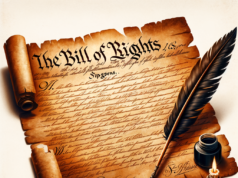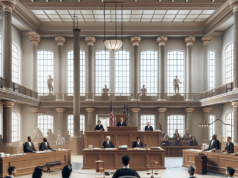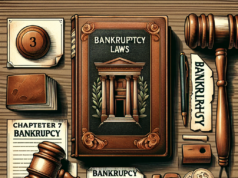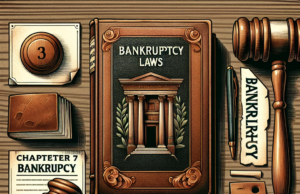Courtroom dramas have long captivated the public’s imagination, serving as a lens through which society views the complexities of justice. From sensational trials that gripped the nation to landmark cases that reshaped legal precedents, these events have not only influenced the outcomes of individual cases but also sparked broader discussions about morality, ethics, and the very fabric of the legal system. This article delves into the evolution of courtroom dramas, explores landmark cases, examines the role of media, and considers the lasting impact of high-profile trials on legislative changes and modern justice.
The Evolution of Courtroom Dramas: A Historical Perspective on Justice
The history of courtroom dramas can be traced back to ancient civilizations, where trials were public spectacles that showcased the power dynamics of society. In the United States, the courtroom became a stage for dramatic confrontations in the 19th century, with cases like the trial of Lizzie Borden capturing the public’s attention and igniting debates about gender, class, and morality. As the 20th century progressed, the advent of radio and television transformed the courtroom into a living narrative, allowing audiences to witness the unfolding of justice in real-time. This evolution reflects not only changes in technology but also shifts in societal values, as the courtroom has become a battleground for issues such as civil rights, criminal justice reform, and the fight against systemic inequality.
Landmark Cases That Redefined Legal Precedents and Public Perception
Throughout history, certain courtroom dramas have emerged as pivotal moments that redefined legal precedents and altered public perception of justice. The trial of Brown v. Board of Education in 1954, which declared racial segregation in public schools unconstitutional, marked a significant turning point in the American legal landscape and catalyzed the Civil Rights Movement. Similarly, the O.J. Simpson trial in the 1990s not only captivated viewers but also exposed deep-seated racial tensions and issues surrounding domestic violence, prompting a national conversation about race, celebrity, and the justice system. These landmark cases illustrate how courtroom dramas can transcend their immediate legal implications, influencing societal norms and expectations regarding justice and equality.
The Role of Media in Shaping Courtroom Narratives and Public Opinion
The media plays a crucial role in shaping courtroom narratives and influencing public opinion, often acting as both a witness and a participant in the judicial process. High-profile trials are frequently accompanied by extensive media coverage, which can sway public sentiment and impact the perception of justice. For instance, the coverage of the trial of Casey Anthony in 2011 raised questions about media ethics and the responsibility of journalists in reporting on sensitive legal matters. The sensationalism that often accompanies such coverage can lead to a “trial by media,” where public opinion is formed before the verdict is delivered, potentially undermining the integrity of the judicial process. As a result, the interplay between media and courtroom dramas continues to evolve, raising important questions about the balance between transparency and sensationalism in the pursuit of justice.
Notable Courtroom Strategies: How Defense and Prosecution Influence Outcomes
Courtroom strategies employed by both defense and prosecution teams can significantly influence trial outcomes, often determining the fate of the accused. Defense attorneys may utilize tactics such as jury selection, expert testimony, and emotional appeals to create reasonable doubt, while prosecutors often rely on compelling evidence and persuasive narratives to secure convictions. The infamous “dream team” defense in the O.J. Simpson trial exemplifies how a well-coordinated defense strategy can challenge the prosecution’s case and sway jury perceptions. Conversely, the prosecution’s ability to present a coherent and compelling narrative can be equally decisive, as seen in the conviction of former police officer Derek Chauvin for the murder of George Floyd. These courtroom strategies highlight the adversarial nature of the legal system, where the skill and approach of each side can dramatically alter the course of justice.
The Impact of High-Profile Trials on Legislative Changes and Legal Reform
High-profile trials often serve as catalysts for legislative changes and legal reform, prompting lawmakers to reevaluate existing laws and practices. The trial of the Chicago Seven in the late 1960s, for example, not only highlighted issues of free speech and civil disobedience but also led to discussions about the rights of protesters and the limits of governmental authority. More recently, the #MeToo movement, spurred by high-profile sexual assault trials, has prompted significant changes in laws regarding sexual harassment and assault, reflecting a societal shift toward greater accountability and support for survivors. These trials underscore the interconnectedness of the judicial system and legislative processes, demonstrating how courtroom dramas can influence policy and societal norms.
Lessons Learned: The Enduring Legacy of Courtroom Dramas in Modern Justice
The enduring legacy of courtroom dramas in modern justice is evident in the ongoing discussions about fairness, equity, and the role of the legal system in society. As new cases emerge that capture public attention, the lessons learned from past trials continue to inform contemporary legal practices and societal expectations. Issues such as racial bias, the treatment of marginalized communities, and the influence of media remain at the forefront of discussions about justice. Furthermore, the evolution of courtroom technology and the increasing accessibility of legal proceedings through digital platforms are reshaping the landscape of justice, allowing for greater public engagement and scrutiny. Ultimately, the legacy of courtroom dramas serves as a reminder of the complexities of justice and the need for ongoing reform to ensure that the legal system serves all members of society equitably.
In conclusion, courtroom dramas have played a pivotal role in shaping the landscape of justice, influencing legal precedents, public perception, and legislative changes. As society continues to grapple with issues of fairness and equity, the lessons learned from these high-profile trials remain relevant, reminding us of the importance of vigilance and reform in the pursuit of justice. The interplay between the courtroom, media, and public opinion will undoubtedly continue to evolve, ensuring that the narrative of justice remains a dynamic and compelling story.


























